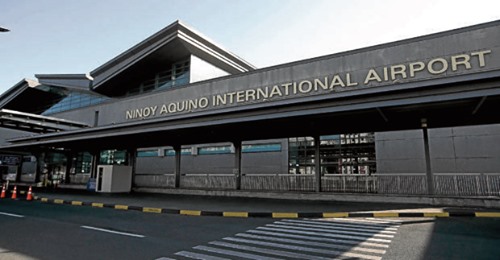
Even as coronavirus cases in the country continue to rise, the government is further easing travel restrictions and again allowing foreign nationals with long-term visas to enter the Philippines starting Aug. 1.
Presidential spokesperson Harry Roque on Friday said the decision of the Inter-Agency Task Force for the Management of Emerging Infectious Diseases (IATF) was “in compliance with the directive to ensure the increase of the capacities of the business sector vis-à-vis available transportation to revitalize the economy in Metro Manila and Calabarzon (Cavite, Laguna, Batangas, Rizal and Quezon).”
In IATF Resolution No. 56 issued on Thursday, the task force prescribed several conditions for foreigners wishing to travel to the country, such as mandatory testing and quarantine for COVID-19.
The resolution covers foreign nationals with immigrant visas as provided for in Commonwealth Act No. 613, or the Philippine Immigration Act of 1940, Republic Act No. 7919, or the Alien Social Integration Act of 1995, and Executive Order No. 324 signed by then President Corazon Aquino on waiving passport requirements for certain immigrants.
No new visa application
“Beginning Aug. 1, 2020, foreign nationals with long-term visas shall be allowed entry in the Philippines, while maintaining the priority of returning overseas Filipinos,” the resolution read.
Foreign nationals with long-term visas who wish to travel to the country should have valid and existing visas at the time of entry.
“However, no new entry visa application shall be accepted,” the IATF said.
Foreign nationals should also prebook an accredited quarantine facility and a COVID-19 testing provider.
Their entry into the Philippines is also “subject to the maximum capacity of inbound passengers at the port and date of entry,” the IATF said.
The resolution was released to the media on Friday amid a new high in COVID-19 cases in the country. The Department of Health reported later that day that the national count on coronavirus cases had reached 63,001.
In an interview over state-run PTV, Roque said foreign nationals with long-term visas should stay in accredited quarantine facilities while waiting for the results of their COVID-19 polymerase chain reaction test.
He also sought to allay the public’s concern that foreigners entering the country may be carrying the coronavirus.
“And these are not ordinary foreigners. These are foreigners who consider the Philippines as their home, since they are permanent residents,” Roque said.
Outbound travel
The resolution came 10 days after the IATF lifted the restrictions on Filipinos’ nonessential travel out of the country, and other travel restrictions on outbound travel due to the COVID-19 pandemic.
IATF Resolution No. 52, released on July 7, imposed several requirements on Filipinos’ outbound travel, such as confirmed round-trip tickets for those traveling on tourist visas, as well as adequate travel and health insurance to cover rebooking and accommodation expenses should they be stranded and hospitalized because of infection.
They should also present proof that they were allowed entry by the destination country, in accordance with respective travel, health and quarantine restrictions.
Filipinos wishing to go abroad for nonessential travel are also required to execute a declaration acknowledging risks in traveling, including the possibility of delay in their return trip.
Upon their return to the Philippines, they should follow the health protocols set by the National Task Force on COVID-19, such as mandatory quarantine and testing.
The government barred most foreigners from entering the country beginning March 22, when Luzon island and other parts of the country went into lockdown.
Among those still allowed to enter the country at the time were foreign spouses and their children accompanied by a Filipino national, as well as officials of foreign governments or international organizations.
The government first imposed a travel ban on Hubei province, China, where the coronavirus pandemic originated, on Jan. 31 and expanded the ban to the rest of China, Hong Kong and Macau on Feb.22.